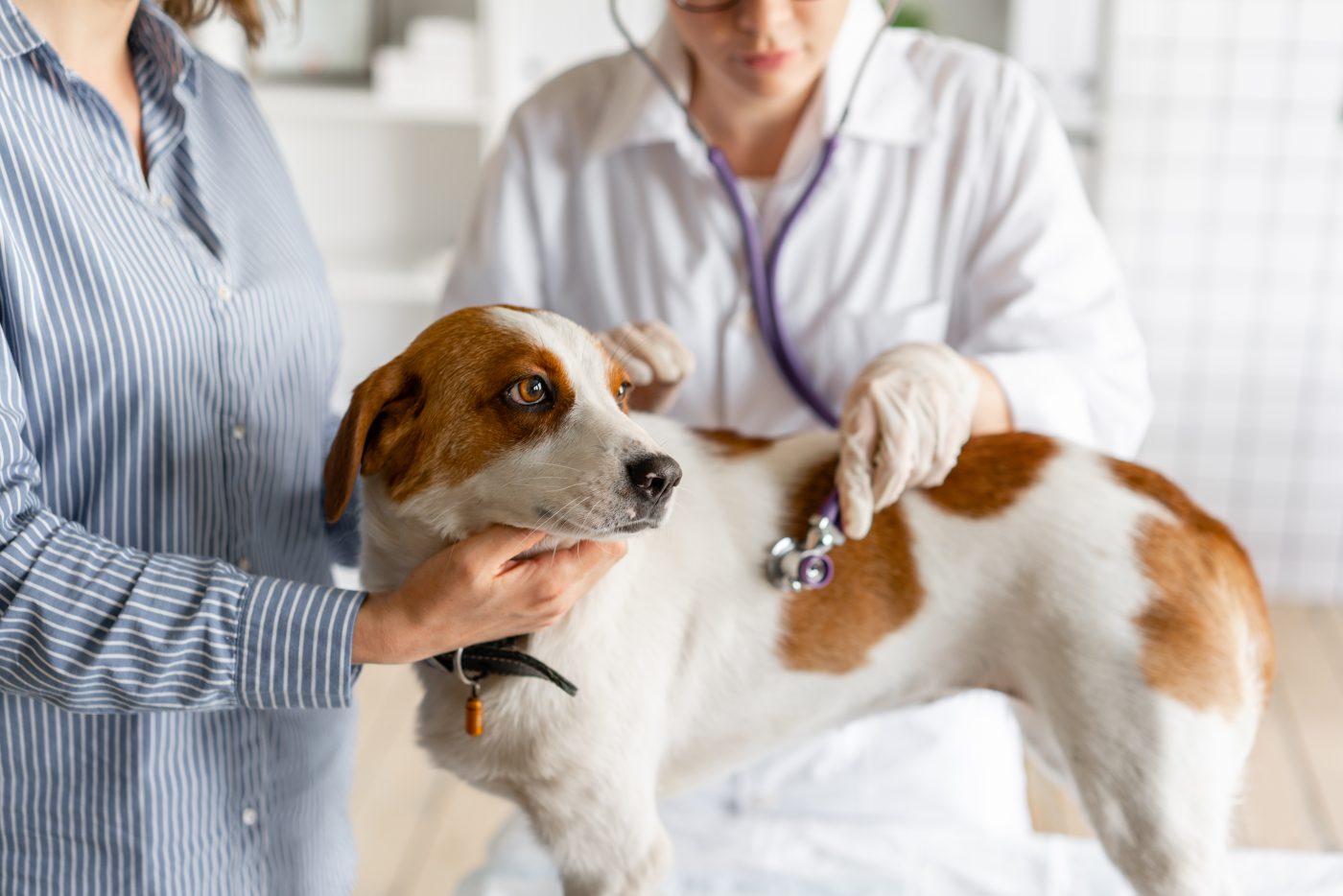 Shutterstock
Shutterstock
Dogs are resilient animals, often concealing signs of pain or discomfort, which makes it challenging for owners to detect when they’re suffering from serious ailments. Conditions like arthritis, dental disease, and gastrointestinal issues can cause significant pain, yet many dogs hide their symptoms well. Recognizing subtle indicators of discomfort—like changes in behavior or reluctance to play—is essential for any dog owner. Early intervention can greatly improve their quality of life, ensuring your furry friend stays happy and comfortable for as long as possible.
Arthritis and Joint Pain
 Shutterstock
Shutterstock
One of the most common ailments in older dogs, arthritis causes inflammation and joint pain, affecting mobility and comfort. Many dogs mask arthritis pain until it becomes severe. Still, subtle changes in behavior, such as reluctance to climb stairs, reduced activity levels, or stiffness after resting, can be early indicators. Large breeds, like Labrador Retrievers and German Shepherds, are especially prone to arthritis due to the strain on their joints. While arthritis cannot be cured, pain management options, including medication and lifestyle adjustments, can significantly improve a dog’s quality of life.
Dental Disease
 Shutterstock
Shutterstock
Dental disease is a common but often overlooked source of pain in dogs. Periodontal disease, tooth decay, and infections can all cause significant discomfort. Many dogs continue eating despite dental pain but may show subtle signs such as bad breath, drooling, or reluctance to chew toys. Small breeds, like Dachshunds and Chihuahuas, are particularly prone to dental issues. Regular dental check-ups, proper brushing, and dental treats can help prevent dental disease, keeping your dog’s mouth healthy and pain-free. Left untreated, dental issues can lead to infections that may impact overall health.
Hip Dysplasia
 Shutterstock
Shutterstock
Hip dysplasia is a genetic condition in which the hip joint doesn’t develop properly, causing pain and mobility issues. This condition is prevalent in large, giant breeds like Golden Retrievers, Rottweilers, and Great Danes. Dogs with hip dysplasia may show signs such as limping, difficulty standing up, or a “bunny hopping” gait when they run. Over time, hip dysplasia can lead to arthritis, intensifying pain. Early diagnosis and treatment, including weight management, supplements, and physical therapy, can help alleviate symptoms and slow down the progression of this painful condition.
Intervertebral Disc Disease (IVDD)
 Shutterstock
Shutterstock
Intervertebral Disc Disease (IVDD) is a spinal condition that causes the discs between vertebrae to degenerate, leading to pain, inflammation, and sometimes even paralysis. IVDD is particularly common in breeds with long bodies, such as Dachshunds and Corgis. Dogs with IVDD may experience back pain, reluctance to jump, or weakness in their hind legs. This condition can be debilitating, but early treatment with medications or, in severe cases, surgery can help manage symptoms. Recognizing the signs of IVDD early can make a significant difference in your dog’s comfort and mobility.
Ear Infections
 Shutterstock
Shutterstock
Ear infections are uncomfortable and can become painful if left untreated. Breeds with floppy ears, like Cocker Spaniels and Basset Hounds, are particularly prone to ear infections due to limited airflow. Dogs with ear infections may shake their heads frequently, scratch their ears, or have a foul odor from the affected ear. In severe cases, infections can cause inflammation and even hearing loss. Regular cleaning and prompt veterinary attention can prevent ear infections from escalating, ensuring your dog stays comfortable and healthy.
Pancreatitis
 Shutterstock
Shutterstock
Pancreatitis, or pancreas inflammation, is a painful condition affecting any dog but is more common in breeds like Miniature Schnauzers and Yorkshire Terriers. Symptoms of pancreatitis include vomiting, diarrhea, lethargy, and a hunched posture due to abdominal pain. Pancreatitis can range from mild to life-threatening, and early intervention is crucial. High-fat diets are a common trigger, so maintaining a balanced diet and monitoring treats can help reduce the risk. Recognizing the early signs of pancreatitis allows prompt treatment, minimizing discomfort and potential complications.
Torn Ligaments
 Shutterstock
Shutterstock
Ligament injuries, particularly tears in the cranial cruciate ligament (CCL), are common in active dogs and can cause significant pain and lameness. Breeds like Labrador Retrievers and Rottweilers are particularly susceptible due to their size and energy levels. Dogs with a torn ligament may hold up the injured leg, limp, or show reluctance to move. Without treatment, a torn ligament can lead to arthritis in the affected joint, worsening the dog’s pain. Surgery and physical therapy can help restore mobility, but early intervention is key to preventing further joint damage.
Gastrointestinal Blockages
 Shutterstock
Shutterstock
Gastrointestinal blockages occur when a dog swallows something indigestible, like toys, bones, or clothing, obstructing the digestive tract. This can cause severe pain, vomiting, and lethargy. Dogs, especially those known for their curious nature, like Labrador Retrievers and Beagles, are prone to eating non-food items. If left untreated, blockages can lead to life-threatening complications. Immediate veterinary care is required, often involving surgery to remove the obstruction. Being mindful of what your dog chews on and monitoring for signs of distress can prevent the discomfort of a GI blockage.
Skin Allergies and Dermatitis
 Shutterstock
Shutterstock
Skin allergies and dermatitis are common in many breeds, causing itching, redness, and irritation. Allergies can be triggered by food, environmental factors, or flea bites, leading to intense itching and discomfort. Breeds like Bulldogs, Boxers, and Golden Retrievers are prone to skin allergies. Dogs with dermatitis may scratch excessively, lick their paws, or have inflamed skin. If left untreated, these symptoms can lead to painful skin infections. Identifying and addressing the cause of the allergy, along with soothing treatments, can alleviate discomfort and keep your dog’s skin healthy.
Urinary Tract Infections (UTIs)
 Shutterstock
Shutterstock
Urinary tract infections (UTIs) are painful and often go unnoticed because dogs may only display subtle symptoms. Female dogs and breeds like Dalmatians and Shih Tzus are more prone to UTIs. Symptoms include frequent urination, straining to urinate, and accidents in the house. If left untreated, UTIs can lead to more serious kidney infections. Ensuring your dog has access to fresh water and regular bathroom breaks can help reduce the risk. Recognizing the early signs and seeking prompt veterinary care can prevent further complications and relieve your dog’s discomfort.
Glaucoma
 Shutterstock
Shutterstock
Glaucoma is an eye condition characterized by increased pressure within the eye, leading to pain, redness, and eventual vision loss if untreated. Breeds like Cocker Spaniels, Basset Hounds, and Siberian Huskies are particularly susceptible to glaucoma. Dogs with glaucoma may show signs like eye redness, squinting, or a noticeable bulging of the eye. Glaucoma can be a hidden source of pain, and catching it early is essential to prevent permanent damage. Regular eye check-ups and prompt treatment can help manage this painful condition and preserve your dog’s vision.
When Your Dog’s Poker Face Needs a Vet Visit
 Shutterstock
Shutterstock
Recognizing that dogs often hide their pain, even in serious health issues, is a responsibility every pet owner should embrace. By understanding the signs of common ailments, you can ensure your furry friend lives a comfortable and healthy life. From joint pain to eye conditions, these hidden health issues can impact your dog’s quality of life if unnoticed. By staying alert to subtle changes in behavior and providing prompt veterinary care, you can make a significant difference in your dog’s well-being, ensuring happier and pain-free days together.
 Toledo, United States.
Toledo, United States.
